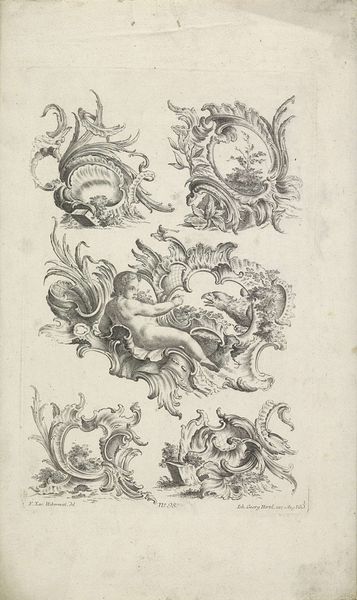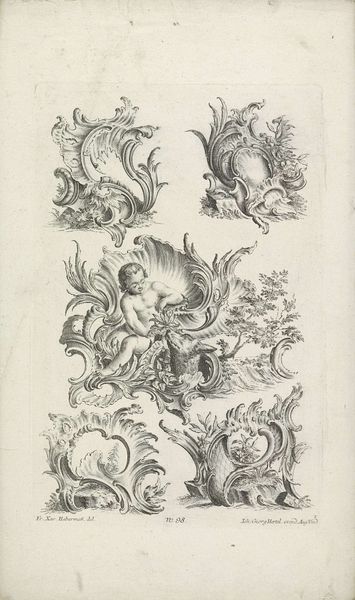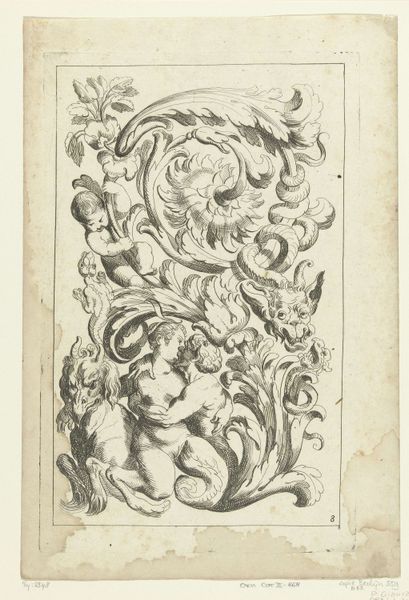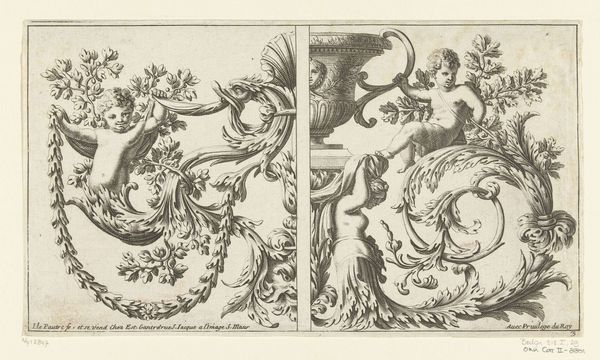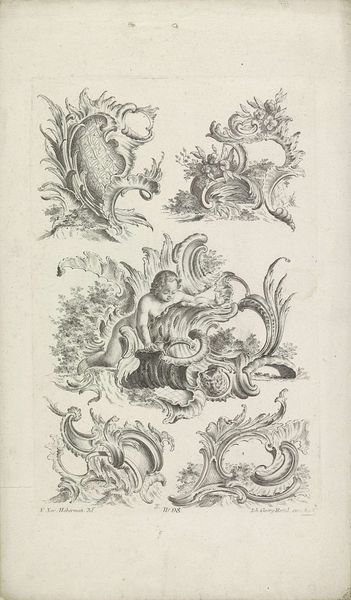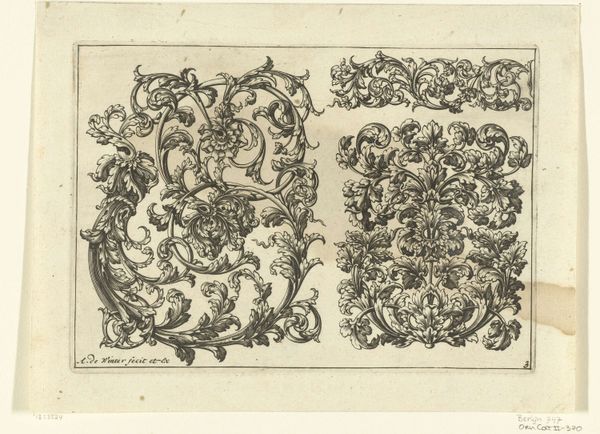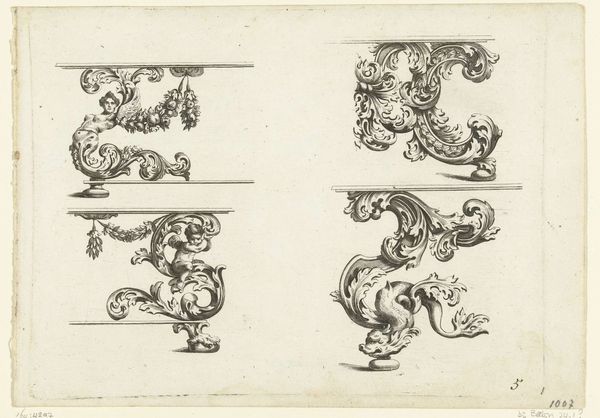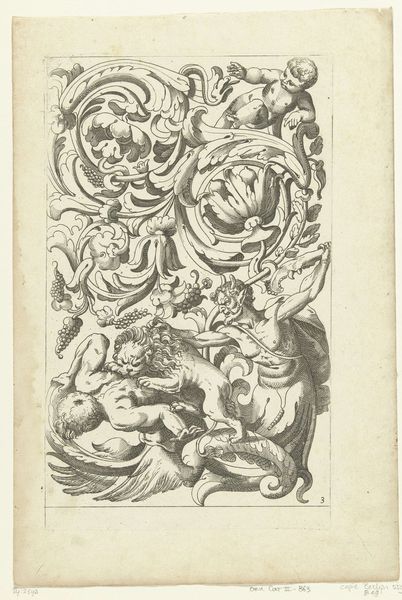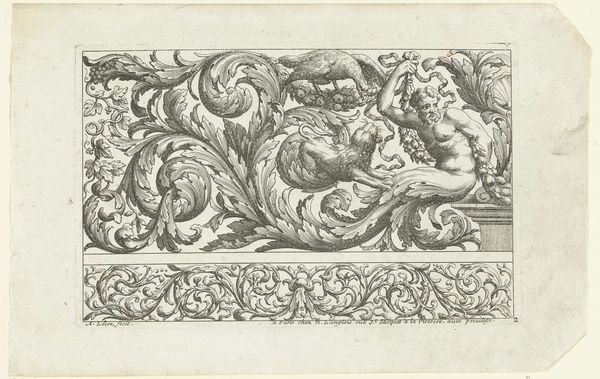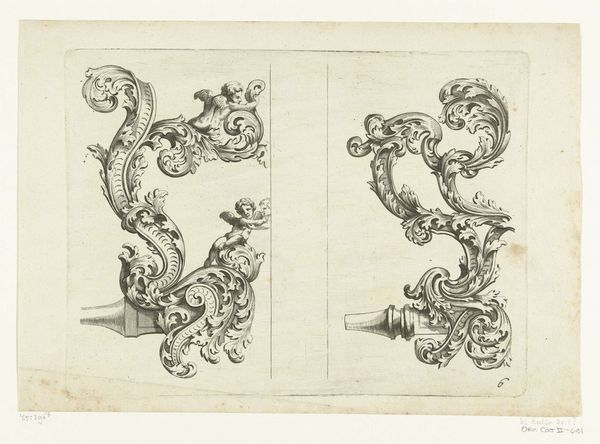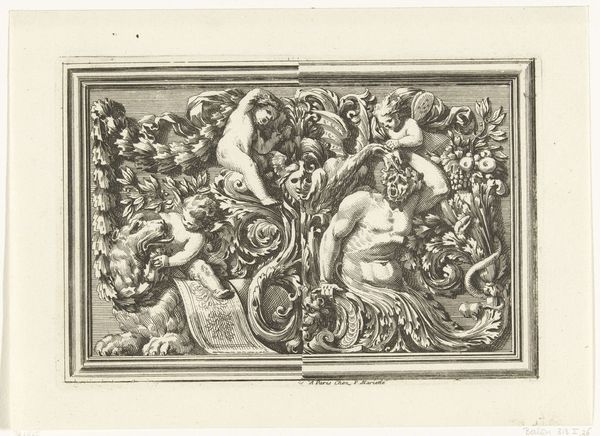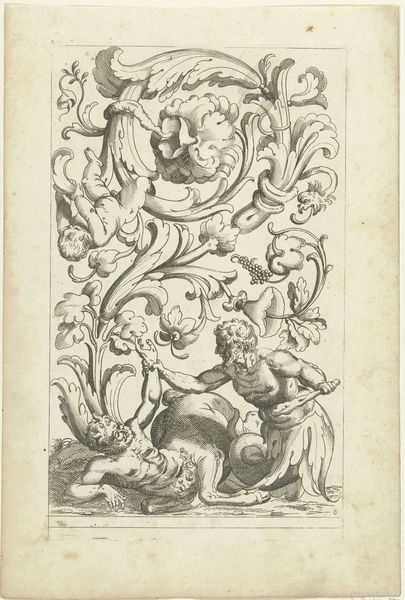
engraving
#
baroque
#
pen drawing
#
old engraving style
#
figuration
#
form
#
nude
#
engraving
Dimensions: height 181 mm, width 238 mm
Copyright: Rijks Museum: Open Domain
Editor: This is “Naakte man en zittende man met bladranken” - "Naked man and seated man with foliage" by Susanne Maria von Sandrart, dating from somewhere between 1668 and 1708. It's an engraving. The intricate lines give it a rather ornate, almost overwhelming feel. What do you make of its composition? Curator: Formally, the piece is a study in contrast. We have two distinct figural arrangements, each framed by swirling foliate designs. Notice how the artist utilizes line weight to create depth. The hatching and cross-hatching define the musculature of the figures and the textures of the foliage, establishing visual rhythm throughout. The composition is also decidedly Baroque with its opulence of intertwined foliage and a curvaceous human form. Do you see how the dynamic posing of the naked man contrasts the relative passivity of the sitting one? Editor: Yes, it's striking! The naked figure seems almost in motion, while the seated man is contemplative, framed by a more rigid setting with straight lines and orthogonal perspective. What’s the significance of this formal contrast? Curator: The opposition isn't merely aesthetic; it creates a dynamic visual push and pull. One could analyze these compositional choices from a philosophical view as well, through the lenses of dualistic theory – consider, perhaps, the juxtaposition of action and contemplation. The engravings prompt considerations regarding movement versus stillness, strength versus intellect, form versus content. Editor: That's fascinating! It really does come down to these binary relations, expressed purely through form and the relationship between the figures and their frames. Thanks for pointing that out. Curator: The image invites close and sustained study of not just *what* is rendered but *how* it is rendered, revealing intricate formal dialogues. Editor: Right, the content exists mostly to expose underlying structural relationships, inviting a reading that’s removed from the specific, moving to a more abstract plane of binaries and compositional gestures. It certainly presents form as a kind of philosophical or theoretical playground, so to speak!
Comments
No comments
Be the first to comment and join the conversation on the ultimate creative platform.

